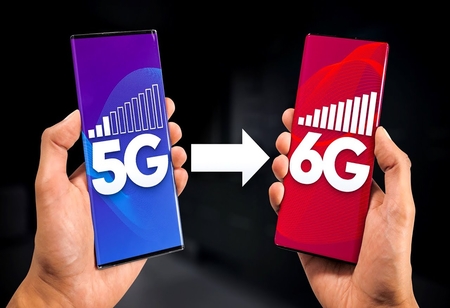6G - The Future Of Connectivity
By Samrat Pradhan, Correspondent

6G technology is planned to grow as a new generation of the global mobile standard in the next few years, adding new capabilities to 5G and 4G/LTE services. Firstly, the growing need for 6G connectivity across industries, as well as a focus on low latency networks for specialized applications, are driving market expansion.
Mobile networks have long been an essential component of a fully linked digital society. Industry and academia have collaborated to create technology for future wireless communication. The expected Key Performance Indicators (KPIs) and use cases for 6G networks have set a high standard. 6G networks are being developed to offer the infrastructure needed for numerous new devices and applications.
The 6G networks are designed to largely inherit 5G technologies and standards while still providing room for innovation. This study provides the vision and requirements for beyond 5G (B5G) networks, focusing on the standards needed to achieve a fully functional and interoperable 6G era in general. We highlight numerous key performance indicators (KPIs) and supporting technologies for B5G networks. Furthermore, standardization actions and initiatives pertaining to spectrum problems are thoroughly examined.
Recent technological advances and a large increase in the number of Internet-of-Things (IoT) devices have resulted in a new paradigm of unique user experiences, radically improved a slew of innovative applications, and the introduction of new use cases. To do this, a considerably more adaptive communication network design, one that is highly intelligent and capable of providing hyper-fast, ultra-reliable, and low-latency connections, is required.
Sixth-generation (6G) communication technologies are projected to meet the needs of next-generation wireless communication systems. The fifth-generation standardization process is now complete, and worldwide installation has commenced. To maintain cellular networks competitively, a partnership between business and academia has already begun in designing the next generation of communication networks known as "6G." It lays the framework for stacking the communication demands that will emerge in the 2030s. In academia and industry, 6G perception, services, technology, and standards are all hot subjects.
Massive multiple-input multiple-output (MIMO) has been envisioned as one of the enabling technologies at the dawn of next-generation wireless systems and networks. Massive MIMO technology has shown its benefits, integrability, and extendibility by its continuous success in 5G and beyond. Furthermore, in recent years, various evolutionary features and revolutionary trends for massive MIMO have progressively emerged, which are predicted to change future 6G wireless systems and networks.
Future massive MIMO systems' functions and performance will be enabled and improved by combining other innovative technologies, architectures, and strategies such as intelligent omni-surfaces (IOSs)/intelligent reflecting surfaces (IRSs), artificial intelligence (AI), THz communications, and cell free architecture. Furthermore, more various vertical applications based on massive MIMO will arise and thrive, including wireless localization and sensing, vehicle communications, non-terrestrial communications, remote sensing, and inter-planetary communications.




